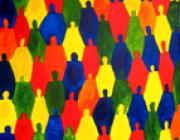Dr. Tom Froese: Can urban society self-organize its government? The case of Teotihuacan
Primary tabs
http://bambuser.com/v/3831236 and http://bambuser.com/v/3831344
Can urban society self-organize its government? The case of Teotihuacan
Tom Froese, Linda Manzanilla and Carlos Gershenson
Keywords: self-organization, archaeology, adaptive systems
Teotihuacan (100 BC – 600 AD) was the first urban civilization in Mesoamerica. During its peak it was one of the world’s most populous cities, and its pyramids are still among the world’s largest monumental constructions. Yet despite its importance in the sociocultural development of Central America, the governing system of this city is a longstanding scientific puzzle because it was exceptional. Teotihuacan uniquely built itself as an inclusive corporate society. But how could a collective system have been organized to ensure the long-lasting success of the city? More precisely, assuming that citizens act in their own best interest, how could such an aggregate of selfish individuals bring about a stable supply of public goods? This question goes beyond the specific case of Teotihuacan, as it is related with the maintenance of cooperation, and has relevance to social policies today. We investigated this question by implementing an abstract mathematical model of the Teotihuacan society, with a particular focus on its capacity as a self-organizing and adaptive social system. Related work in systems theory has demonstrated that it is possible to apply well-known principles from artificial neural network self-organization to the issue of global optimization in a collectively organized social system. Interestingly, this simple model makes a sociological prediction based on the city’s highly efficient (global) resource optimization: if the city was indeed collectively organized somewhat akin to our model, then we expect there to have been community-wide rituals that would have served the purpose of effecting a temporary behavioral reset of the citizens. We investigated the effects of this reset mechanism for our model at three levels of social organization: the city, its large sectors, and their neighborhoods. We conclude by discussing how well the optimal configuration of our idealized model matches with the city’s configuration as suggested by archaeology.
Place: Computer Science Department Seminar Room (412), 4th floor of IIMAS, Ciudad Universitaria.
- Log in to post comments

